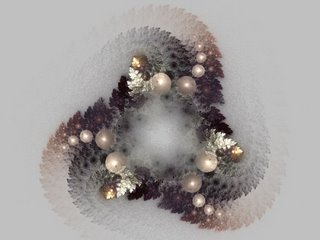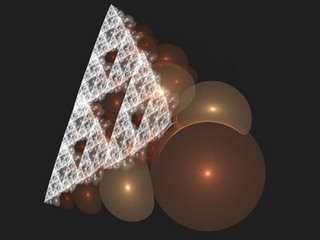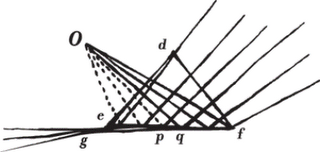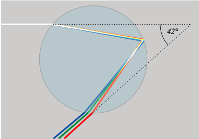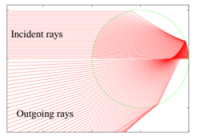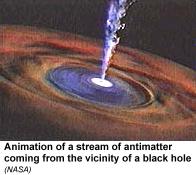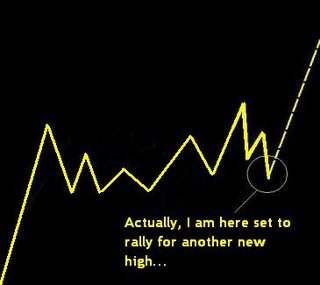Going Supernova 3Dgif

Click on Refresh Page
to activate gif movie
Modeling the collapse of a massive star represents one of the greatest challenges in computational physics. All four fundamental forces of nature are in play, giving us a cosmic laboratory with conditions unlike anywhere else in the Universe. Only if we truly understand the fundamental physics involved and do a perfect job of implementing the computational algorithms will we be able to reproduce the ever-increasing quality of the observational data.
It focuses on the deaths of aged stars in supernova explosions, which are among the most violent events in nature, unleashing power that can briefly outshine a galaxy of 100 billion stars. When a supernova explodes, it blasts oxygen, carbon and other vital chemical elements through space and creates heavier elements like copper and nickel.
Unlike Type I supernovae, which are powered by a thermonuclear explosion of a white dwarf star, Type II supernovae, the more frequently occurring type modeled by Warren and Fryer, are powered by the massive star's gravitational collapse. The star begins its life burning hydrogen, then heavier elements as the hydrogen is exhausted and the temperature rises. Eventually, the core of the star consists entirely of iron, which can no longer provide the energy to resist the enormous gravitational forces pushing down on it.
As the iron atoms are crushed together, the core temperature rises to more than 10 billion degrees. The force of gravity overcomes the repulsive force between the nuclei and, in a few tenths of a second, the core of the star collapses from its original size of about one-half the diameter of Earth to 100 kilometers. The core heats the material surrounding it not with light, but by radiating most of its energy in neutrinos, nearly massless sub-atomic particles that can pass through tons of matter without being affected. As the in-falling gas approaches the core, it is exposed to a higher and higher flux of neutrinos. A tiny fraction of those neutrinos are absorbed. They heat the gas, which expands and becomes buoyant.
The heated gas floats upward in large bubbles carrying energy away from the core and is replaced by colder gas that sinks toward the core and in turn becomes heated. This heat transfer from the core to the envelope of the star results in enough energy transfer to create an explosion.
"With these three-dimensional results, we have reached the final battleground and are ready to attack the more exotic problems that involve rotation and non-symmetric accretion."
los alamos news/releases 4 June 2002
LOS ALAMOS, N.M., June 4, 2002 -- Astrophysicists from Los Alamos National Laboratory, New Mexico, created the first 3-D computer simulations of the spectacular explosion that marks the death of a massive star. Presented to the American Astronomical Society meeting in Albuquerque, N.M., the research by Michael Warren and Chris Fryer eliminates some of the doubts about earlier 2-D modeling and paves the way for rapid advances on other, more exotic questions about supernovae.
The work of Warren and Fryer is part of a larger Supernova Science Center effort, which includes scientists from the University of Arizona, the University of California Santa Cruz and Lawrence Livermore National Laboratory. The Supernova Science Center is funded by the Department of Energy's Office of Science, Scientific Discovery Through Advanced Computing program.
More information is available at www.supersci.org.
Other groups, including the Terascale Supernova Initiative headed by Anthony Mezzacappa at Oak Ridge National Laboratory and the group led by Thomas Janka at the Max Planck Institute for Astrophysics in Germany, are also making rapid progress in the area of core-collapse supernovae.
Los Alamos National Laboratory is operated by the University of California for the National Nuclear Security Administration (NNSA) of the U.S. Department of Energy and works in partnership with NNSA's Sandia and Lawrence Livermore national laboratories to support NNSA in its mission.
Los Alamos enhances global security by ensuring the safety and reliability of the U.S. nuclear weapons stockpile, developing technical solutions to reduce the threat of weapons of mass destruction and solving problems related to energy, environment, infrastructure, health and national security concerns..
Images available online los alamos national laboratories
_______________________________________________________
SciDac Supernova Science Centre
Are-we-made-of-stardust by Plato
_______________________________________________________
_______________________________________________________
If you obey all the rules you miss all the fun.
Katharine Hepburn more Famous Quotes
_______________________________________________________



